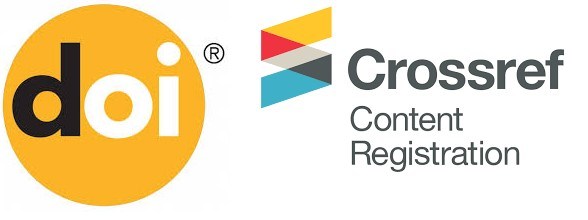Application of classification, clustering and prediction algorithms in the detection of patterns associated with mobility using vehicle trajectory data
DOI:
https://doi.org/10.46480/esj.7.2.188Keywords:
Sustainable Mobility, Pattern, Kmeans, AlgorithmsAbstract
Context: Traffic problems represent an impediment to the personal development of students and workers who must meet specific schedules. This article seeks to deepen the study of this problem and serve as a precedent for future research. Method: Classification (K Nearest Neighbor), clustering (K-mean) and prediction (Linear Regression) algorithms were applied to a database of vehicle trajectories, using three datasets with information on distance, duration, temperature and time of day. Results: A relationship is found between high temperatures and longer trip lengths, trips with the same distance but different durations, and longer durations at midday and in the afternoon. Conclusions: The relationship between high temperatures and longer trip lengths may be due to mobility problems due to high traffic volume in the midday hours. The differences in travel time for trips of equal distance could be explained by the routes and times at which users made them. Finally, this study lays the groundwork for future research that seeks to analyze and establish solutions to the traffic problems that affect the personal development of students and workers.
Downloads
References
Alcívar Vargas, M. (2022). Recolección y procesamiento de datos de movilidad para determinar los diferentes modos de transporte utilizados en la Universidad Central del Ecuador. Facultad de Ingeniería y Ciencias Aplicadas, Universidad Central del Ecuador: http://www.dspace.uce.edu.ec/bitstream/25000/26292/1/UCE-FING-ISI-ALCIVAR%20MARCOS.pdf
Bastien, P., Vinzi, V. E., & Tenenhaus, M. (2005). PLS generalised linear regression. Computational Statistics and Data Analysis, 48(1), 17–46. https://doi.org/10.1016/j.csda.2004.02.005 DOI: https://doi.org/10.1016/j.csda.2004.02.005
Chavez Estrella, M., Enríquez-Reyes, R., Cadena Flores, G., & Mocayo Unda, M. (2020). Identificación de Patrones de Movilidad Utilizando Datos en Tiempo Real Generados por Access Points en una Red de Comunicaciones de Campus. Caso de estudio: Universidad Central del Ecuador. Revista el Ingenio: https://revistadigital.uce.edu.ec/index.php/INGENIO/article/view/2236 DOI: https://doi.org/10.29166/ingenio.v3i2.2236
Ikotun, A. M., & Ezugwu, A. E. (2022). Boosting k-means clustering with symbiotic organisms search for automatic clustering problems. PLoS ONE, 17(8 August). https://doi.org/10.1371/journal.pone.0272861 DOI: https://doi.org/10.1371/journal.pone.0272861
Khandelwal, M., Rout, R. K., Umer, S., Sahoo, K. S., Jhanjhi, N. Z., Shorfuzzaman, M., & Masud, M. (2023). A Pattern Classification Model for Vowel Data Using Fuzzy Nearest Neighbor. Intelligent Automation and Soft Computing, 35(3), 3587–3598. https://doi.org/10.32604/iasc.2023.029785 DOI: https://doi.org/10.32604/iasc.2023.029785
Rosa Isela, M. (2019). Análisis de movilidad en entornos urbanos. Instituto Politecnico Internacional: https://www.saber.cic.ipn.mx/SABERv3/Repositorios/webVerArchivo/26083/1
Terraza, M., Zhang, J., & Li, Z. (2021). INTERSECTION SIGNAL TIMING OPTIMISATION FOR AN URBAN STREET NETWORK TO MINIMISE TRAFFIC DELAYS | OPTIMIZACIÓN DEL TIEMPO DE LA SEÑAL DE INTERSECCIÓN PARA UNA RED DE CALLE URBANA PARA MINIMIZAR LAS RETRASOS DEL TRÁFICO. Promet - Traffic - Traffico, 33(4), 579–592. https://doi.org/10.7307/ptt.v33i4.3694 DOI: https://doi.org/10.7307/ptt.v33i4.3694
Downloads
Published
Issue
Section
License
Copyright (c) 2023 Dayana Salvatierra, Joshue Laborde, Oscar León-Granizo

This work is licensed under a Creative Commons Attribution-NonCommercial-NoDerivatives 4.0 International License.
Authors retain the copyright of their articles and are therefore free to share, copy, distribute, perform, and publicly communicate their work on their personal websites or in institutional repositories after its publication in this journal, provided that full bibliographic information is given to acknowledge its original publication.































